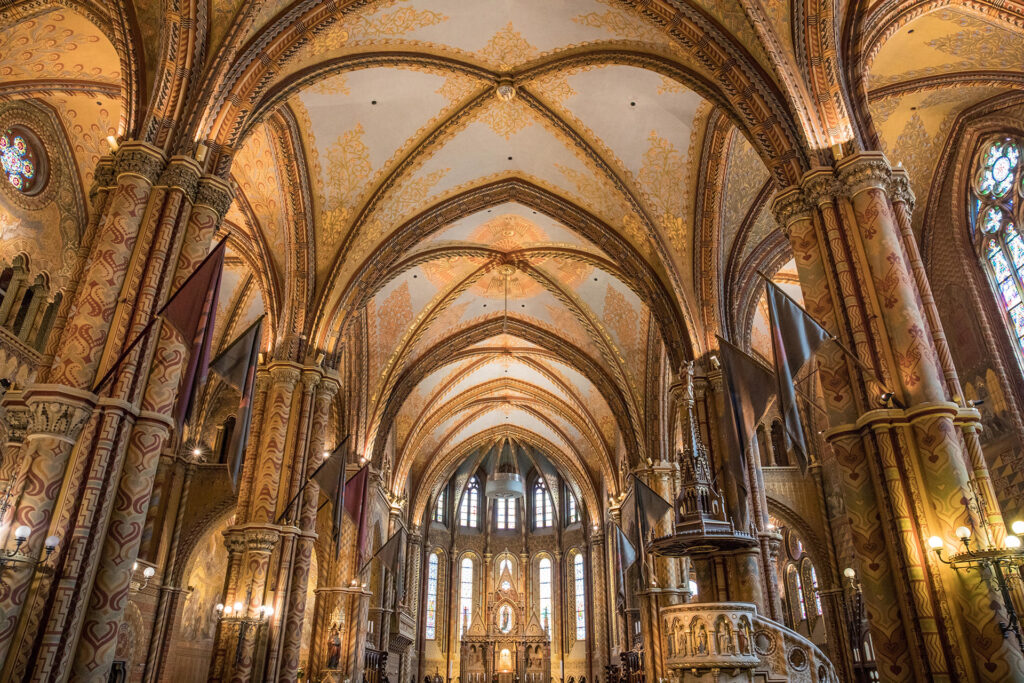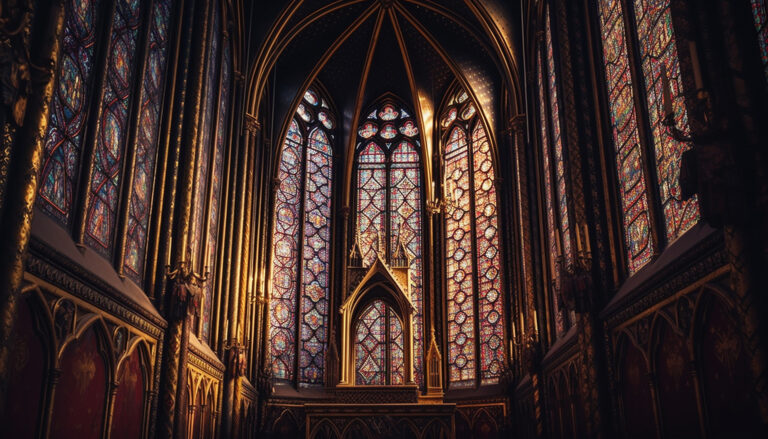
Gothic Architecture
Gothic architecture is one of the most prominent architectural styles of the Middle Ages, which emerged in 12th-century France and expanded across parts of Europe until the 16th century. This style brought about a significant transformation in the design of both religious and secular buildings and remains recognized as one of the most important achievements in architecture.
Key Features of Gothic Architecture
1. Pointed Arches: One of the distinguishing characteristics of Gothic architecture is the use of pointed arches, which helped distribute forces more effectively and enabled greater building heights.
2. Ribbed Vaults: These vaults, constructed with slender columns and narrow arches, allowed for the design of taller and more intricate ceilings.
3. Stained Glass Windows: Extensive use of large windows with stained glass provided natural and colorful light, creating a spiritual and inspiring ambiance.
4. Flying Buttresses: These structural elements, designed as external semi-arches, helped distribute the building’s weight and allowed for thinner and taller walls.
Prominent Examples of Gothic Architecture
1. Notre-Dame de Paris: This cathedral is one of the most famous examples of Gothic architecture, known for its intricate details and complex design.
2. Chartres Cathedral: With its stunning stained glass windows and symmetrical design, it is one of the finest examples of classic Gothic architecture.
3. Cologne Cathedral: A masterpiece of Gothic architecture in Germany, renowned for the height of its towers.
Influences of Gothic Architecture
Gothic architecture influenced not only the design of churches and religious buildings but also the construction of palaces, town halls, and even bridges. Due to its structural innovations and aesthetic appeal, this style laid the groundwork for many modern architectural ideas.
Conclusion
Gothic architecture, by combining art, technology, and faith, left a lasting mark on the history of global architecture. This style not only reflects the high skill level of medieval architects but also demonstrates their profound understanding of beauty and the functional use of interior spaces. Gothic architecture continues to inspire contemporary architects and artists, and its value as one of the world’s cultural heritages remains undiminished.


No comments yet.